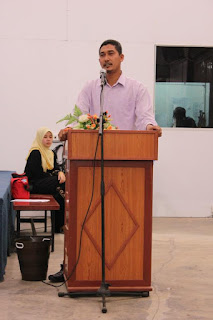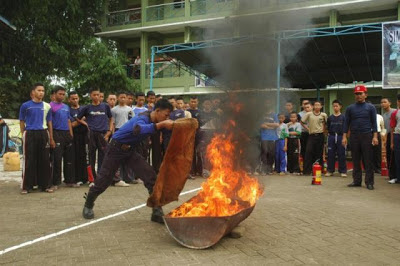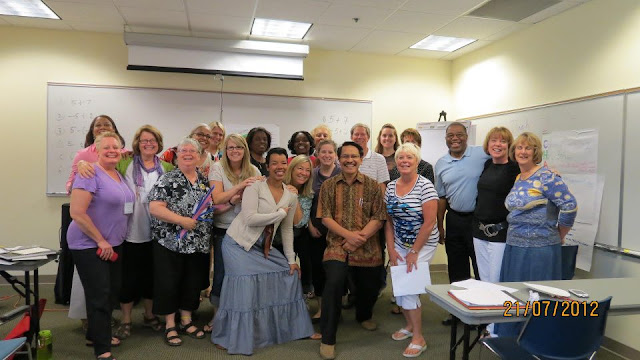(The Boy Crisis. The Gurian Institute is featured in this Newsweek cover story.)
Spend a few minutes on the phone with Danny Frankhuizen and you come away thinking, "What a nice boy." He's thoughtful, articulate, bright. He has a good relationship with his mom, goes to church every Sunday, loves the rock band Phish and spends hours each day practicing his guitar. But once he's inside his large public Salt Lake City high school, everything seems to go wrong. He's 16, but he can't stay organized. He finishes his homework and then can't find it in his backpack. He loses focus in class, and his teachers, with 40 kids to wrangle, aren't much help. "If I miss a concept, they tell me, 'Figure it out yourself'," says Danny. Last year Danny's grades dropped from B's to D's and F's. The sophomore, who once dreamed of Stanford, is pulling his grades up but worries that "I won't even get accepted at community college."
His mother, Susie Malcom, a math teacher who is divorced, says it's been wrenching to watch Danny stumble. "I tell myself he's going to make something good out of himself," she says. "But it's hard to see doors close and opportunities fall away."
What's wrong with Danny? By almost every benchmark, boys across the nation and in every demographic group are falling behind. In elementary school, boys are two times more likely than girls to be diagnosed with learning disabilities and twice as likely to be placed in special-education classes. High-school boys are losing ground to girls on standardized writing tests. The number of boys who said they didn't like school rose 71 percent between 1980 and 2001, according to a University of Michigan study. Nowhere is the shift more evident than on college campuses. Thirty years ago men represented 58 percent of the undergraduate student body. Now they're a minority at 44 percent. This widening achievement gap, says Margaret Spellings, U.S. secretary of Education, "has profound implications for the economy, society, families and democracy."
With millions of parents wringing their hands, educators are searching for new tools to help tackle the problem of boys. Books including Michael Thompson's best seller "Raising Cain" (recently made into a PBS documentary) and Harvard psychologist William Pollack's definitive work "Real Boys" have become must-reads in the teachers' lounge. The Gurian Institute, founded in 1997 by family therapist Michael Gurian to help the people on the front lines help boys, has enrolled 15,000 teachers in its seminars. Even the Gates Foundation, which in the last five years has given away nearly a billion dollars to innovative high schools, is making boys a big priority. "Helping underperforming boys," says Jim Shelton, the foundation's education director, "has become part of our core mission."
The problem won't be solved overnight. In the last two decades, the education system has become obsessed with a quantifiable and narrowly defined kind of academic success, these experts say, and that myopic view is harming boys. Boys are biologically, developmentally and psychologically different from girls--and teachers need to learn how to bring out the best in every one. "Very well-meaning people," says Dr. Bruce Perry, a Houston neurologist who advocates for troubled kids, "have created a biologically disrespectful model of education."
Thirty years ago it was girls, not boys, who were lagging. The 1972 federal law Title IX forced schools to provide equal opportunities for girls in the classroom and on the playing field. Over the next two decades, billions of dollars were funneled into finding new ways to help girls achieve. In 1992, the American Association of University Women issued a report claiming that the work of Title IX was not done--girls still fell behind in math and science; by the mid-1990s, girls had reduced the gap in math and more girls than boys were taking high-school-level biology and chemistry.
Some scholars, notably Christina Hoff Sommers, a fellow at the American Enterprise Institute, charge that misguided feminism is what's been hurting boys. In the 1990s, she says, girls were making strong, steady progress toward parity in schools, but feminist educators portrayed them as disadvantaged and lavished them with sup-port and attention. Boys, meanwhile, whose rates of achievement had begun to falter, were ignored and their problems allowed to fester (page 53).
Boys have always been boys, but the expectations for how they're supposed to act and learn in school have changed. In the last 10 years, thanks in part to activist parents concerned about their children's success, school performance has been measured in two simple ways: how many students are enrolled in accelerated courses and whether test scores stay high. Standardized assessments have become commonplace for kids as young as 6. Curricula have become more rigid. Instead of allowing teachers to instruct kids in the manner and pace that suit each class, some states now tell teachers what, when and how to teach. At the same time, student-teacher ratios have risen, physical education and sports programs have been cut and recess is a distant memory. These new pressures are undermining the strengths and underscoring the limitations of what psychologists call the "boy brain"-- the kinetic, disorganized, maddening and sometimes brilliant behaviors that scientists now believe are not learned but hard-wired.
When Cris Messler of Mountainside, N.J., brought her 3-year-old son Sam to a pediatrician to get him checked for ADHD, she was acknowledging the desperation parents can feel. He's a high-energy kid, and Messler found herself hoping for a positive diagnosis. "If I could get a diagnosis from the doctor, I could get him on medicine," she says. The doctor said Sam is a normal boy. School has been tough, though. Sam's reading teacher said he was hopeless. His first-grade teacher complains he's antsy, and Sam, now 7, has been referring to himself as "stupid." Messler's glad her son doesn't need medication, but what, she wonders, can she do now to help her boy in school?
For many boys, the trouble starts as young as 5, when they bring to kindergarten a set of physical and mental abilities very different from girls'. As almost any parent knows, most 5-year-old girls are more fluent than boys and can sight-read more words. Boys tend to have better hand-eye coordination, but their fine motor skills are less developed, making it a struggle for some to control a pencil or a paintbrush. Boys are more impulsive than girls; even if they can sit still, many prefer not to--at least not for long.
Thirty years ago feminists argued that classic "boy" behaviors were a result of socialization, but these days scientists believe they are an expression of male brain chemistry. Sometime in the first trimester, a boy fetus begins producing male sex hormones that bathe his brain in testosterone for the rest of his gestation. "That exposure wires the male brain differently," says Arthur Arnold, professor of physiological science at UCLA. How? Scientists aren't exactly sure. New studies show that prenatal exposure to male sex hormones directly affects the way children play. Girls whose mothers have high levels of testosterone during pregnancy are more likely to prefer playing with trucks to playing with dolls. There are also clues that hormones influence the way we learn all through life. In a Dutch study published in 1994, doctors found that when males were given female hormones, their spatial skills dropped but their verbal skills improved.
In elementary-school classrooms--where teachers increasingly put an emphasis on language and a premium on sitting quietly and speaking in turn--the mismatch between boys and school can become painfully obvious. "Girl behavior becomes the gold standard," says "Raising Cain" coauthor Thompson. "Boys are treated like defective girls."
Two years ago Kelley King, principal of Douglass Elementary School in Boulder, Colo., looked at the gap between boys and girls and decided to take action. Boys were lagging 10 points behind girls in reading and 14 points in writing. Many more boys --than girls were being labeled as learning disabled, too. So King asked her teachers to buy copies of Gurian's book "The Minds of Boys," on boy-friendly classrooms, and in the fall of 2004 she launched a bold experiment. Whenever possible, teachers replaced lecture time with fast-moving lessons that all kids could enjoy. Three weeks ago, instead of discussing the book "The View From Saturday," teacher Pam Unrau divided her third graders into small groups, and one student in each group pretended to be a character from the book. Classes are noisier, Unrau says, but the boys are closing the gap. Last spring, Douglass girls scored an average of 106 on state writing tests, while boys got a respectable 101.
Primatologists have long observed that juvenile male chimps battle each other not just for food and females, but to establish and maintain their place in the hierarchy of the tribe. Primates face off against each other rather than appear weak. That same evolutionary imperative, psychologists say, can make it hard for boys to thrive in middle school--and difficult for boys who are failing to accept the help they need. The transition to middle school is rarely easy, but like the juvenile primates they are, middle-school boys will do almost anything to avoid admitting that they're overwhelmed. "Boys measure everything they do or say by a single yardstick: does this make me look weak?" says Thompson. "And if it does, he isn't going to do it." That's part of the reason that videogames have such a powerful hold on boys: the action is constant, they can calibrate just how hard the challenges will be and, when they lose, the defeat is private.
When Brian Johns hit seventh grade, he never admitted how vulnerable it made him feel. "I got behind and never caught up," says Brian, now 17 and a senior at Grand River Academy, an Ohio boarding school. When his parents tried to help, he rebuffed them. When his mother, Anita, tried to help him organize his assignment book, he grew evasive about when his homework was due. Anita didn't know where to turn. Brian's school had a program for gifted kids, and support for ones with special needs. But what, Anita asked his teachers, do they do about kids like her son who are in the middle and struggling? Those kids, one of Brian's teachers told Anita, "are the ones who fall through the cracks."
It's easy for middle-school boys to feel outgunned. Girls reach sexual maturity two years ahead of boys, but other, less visible differences put boys at a disadvantage, too. The prefrontal cortex is a knobby region of the brain directly behind the forehead that scientists believe helps humans organize complex thoughts, control their impulses and understand the consequences of their own behavior. In the last five years, Dr. Jay Giedd, an expert in brain development at the National Institutes of Health, has used brain scans to show that in girls, it reaches its maximum thickness by the age of 11 and, for the next decade or more, continues to mature. In boys, this process is delayed by 18 months.
Middle-school boys may use their brains less efficiently, too. Using a type of MRI that traces activity in the brain, Deborah Yurgelun-Todd, director of the cognitive neuroimaging laboratory at McLean Hospital in Belmont, Mass., tested the activity patterns in the prefrontal cortex of children between the ages of 11 and 18. When shown pictures of fearful faces, adolescent girls registered activity on the right side of the prefrontal cortex, similar to an adult. Adolescent boys used both sides--a less mature pattern of brain activity. Teenage girls can process information faster, too. In a study about to be published in the journal Intelligence, researchers at Vanderbilt University administered timed tests--picking similar objects and matching groups of numbers--to 8,000 boys and girls between the ages of 5 and 18. In kindergarten, boys and girls processed information at about the same speeds. In early adolescence, girls finished faster and got more right. By 18, boys and girls were processing with the same speed and accuracy.
Scientists caution that brain research doesn't tell the whole story: temperament, family background and environment play big roles, too. Some boys are every bit as organized and assertive as the highest-achieving girls. All kids can be scarred by violence, alcohol or drugs in the family. But if your brain hasn't reached maturity yet, says Yurgelun-Todd, "it's not going to be able to do its job optimally."
Across the nation, educators are reviving an old idea: separate the girls from the boys--and at Roncalli Middle School, in Pueblo, Colo., administrators say, it's helping kids of both genders. This past fall, with the blessing of parents, school guidance counselor Mike Horton assigned a random group of 50 sixth graders to single-sex classes in core subjects. These days, when sixth-grade science teacher Pat Farrell assigns an earth-science lab on measuring crystals, the girls collect their materials--a Bunsen burner, a beaker of phenyl salicylate and a spoon. Then they read the directions and follow the sequence from beginning to end. The first things boys do is ask, "Can we eat this?" They're less organized, Farrell notes, but sometimes, "they're willing to go beyond what the lab asks them to do." With this in mind, he hands out written instructions to both classes but now goes over them step by step for the boys. Although it's too soon to declare victory, there are some positive signs: the shyest boys are participating more. This fall, the all-girl class did best in math, English and science, followed by the all-boy class and then coed classes.
One of the most reliable predictors of whether a boy will succeed or fail in high school rests on a single question: does he have a man in his life to look up to? Too often, the answer is no. High rates of divorce and single motherhood have created a generation of fatherless boys. In every kind of neighborhood, rich or poor, an increasing number of boys--now a startling 40 percent--are being raised without their biological dads.
Psychologists say that grandfathers and uncles can help, but emphasize that an adolescent boy without a father figure is like an explorer without a map. And that is especially true for poor boys and boys who are struggling in school. Older males, says Gurian, model self-restraint and solid work habits for younger ones. And whether they're breathing down their necks about grades or admonishing them to show up for school on time, "an older man reminds a boy in a million different ways that school is crucial to their mission in life."
In the past, boys had many opportunities to learn from older men. They might have been paired with a tutor, apprenticed to a master or put to work in the family store. High schools offered boys a rich array of roles in which to exercise leadership skills--class officer, yearbook editor or a place on the debate team. These days, with the exception of sports, more girls than boys are involved in those activities.
In neighborhoods where fathers are most scarce, the high-school dropout rates are shocking: more than half of African-American boys who start high school don't finish. David Banks, principal of the Eagle Academy for Young Men, one of four all-boy public high schools in the New York City system, wants each of his 180 students not only to graduate from high school but to enroll in college. And he's leaving nothing to chance. Almost every Eagle Academy boy has a male mentor--a lawyer, a police officer or an entrepreneur from the school's South Bronx neighborhood. The impact of the mentoring program, says Banks, has been "beyond profound." Tenth grader Rafael Mendez is unequivocal: his mentor "is the best thing that ever happened to me." Before Rafael came to Eagle Academy, he dreamed about playing pro baseball, but his mentor, Bronx Assistant District Attorney Rafael Curbelo, has shown him another way to succeed: Mendez is thinking about attending college in order to study forensic science.
Colleges would welcome more applications from young men like Rafael Mendez. At many state universities the gender balance is already tilting 60-40 toward women. Primary and secondary schools are going to have to make some major changes, says Ange Peterson, president-elect of the American Association of Collegiate Registrars and Admissions Officers, to restore the gender balance. "There's a whole group of men we're losing in education completely," says Peterson.
For Nikolas Arnold, 15, a sophomore at a public high school in Santa Monica, Calif., college is a distant dream. Nikolas is smart: he's got an encyclopedic knowledge of weaponry and war. When he was in first grade, his principal told his mother he was too immature and needed ADHD drugs. His mother balked. "Too immature?" says Diane Arnold, a widow. "He was six and a half!" He's always been an advanced reader, but his grades are erratic. Last semester, when his English teacher assigned two girls' favorites--"Memoirs of a Geisha" and "The Secret Life of Bees" Nikolas got a D. But lately, he has a math teacher he likes and is getting excited about numbers. He's reserved in class sometimes. But now that he's more engaged, his grades are improving slightly and his mother, who's pushing college, is hopeful he will begin to hit his stride. Girls get A's and B's on their report cards, she tells him, but that doesn't mean boys can't do it, too.
(This article was published in Newsweek Magazine on Jan 29, 2006)


















